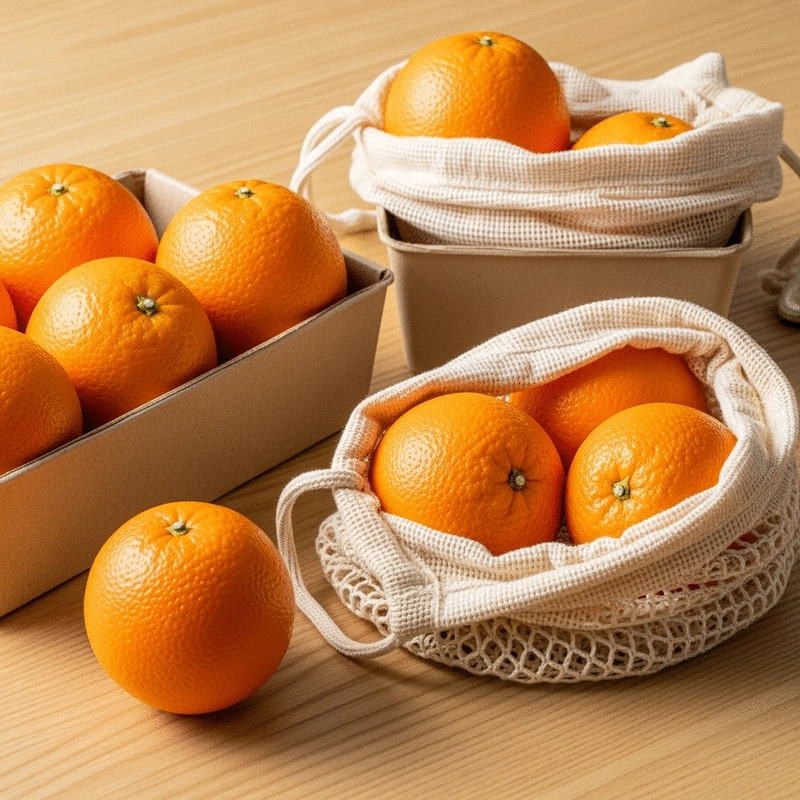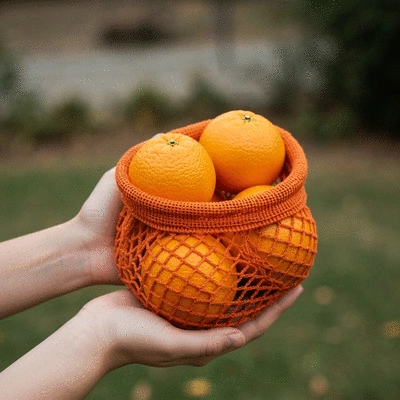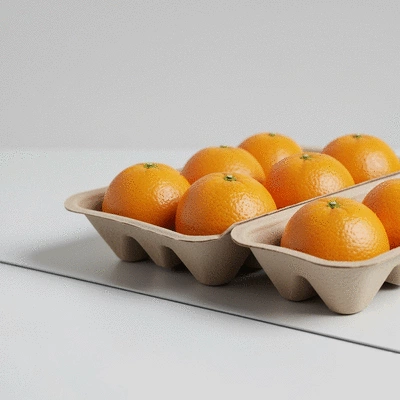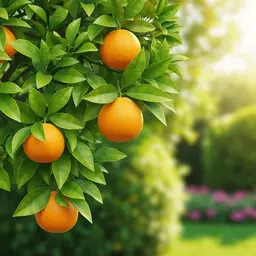Environmental Impact: Traditional vs. Eco-Friendly
Traditional: High landfill waste, carbon emissions, ecosystem harm.
Eco-Friendly: Reduced waste, lower emissions, ecosystem protection.
The citrus industry is at a pivotal point where innovative eco-friendly solutions are not just beneficial but essential for sustainability and consumer trust. Let's delve into the key insights surrounding the importance of sustainable packaging for oranges.
This visual highlights key comparisons in sustainable packaging for oranges, focusing on environmental impact and consumer choices.
Awareness: Informed environmental choices.
Health: Link to healthier products.
Authenticity: Brands aligning with values.
Plant-based: Materials from orange peels.
Smart Packaging: Freshness monitoring.
Carbon Reduction: Eco-friendly production.
As someone who has a deep love for sustainable gardening practices, I find that eco-friendly packaging solutions are a crucial aspect of the citrus industry. The growing awareness of environmental issues has made it clear: packaging matters. Not only does it impact our planet, but it also influences how consumers perceive and choose their products. In this article, we’ll explore the importance of innovative solutions that can reshape our approach to orange packaging.
In Australia, where I’ve seen the vibrant orange orchards firsthand, the emphasis on sustainability is more than a trend—it’s a necessity. Every choice we make in packaging affects not just our oranges, but the entire ecosystem. That’s why understanding the reasons behind eco-friendly packaging is essential for both producers and consumers alike, particularly when considering sustainable orange farming in Australia.
Eco-friendly packaging is not just a buzzword; it represents a shift towards a more sustainable citrus industry. The benefits of adopting such practices can be seen in several key areas:
By prioritizing eco-friendly packaging, we lead the way for future generations. It’s about creating a balance between meeting consumer needs and protecting our planet.
Traditional packaging methods often come with significant environmental drawbacks. For instance, plastic waste from conventional packaging can take hundreds of years to decompose, contributing to pollution and harming wildlife. Here are some key impacts:
As a horticulturist, I can’t help but feel a sense of urgency in addressing these issues. We have the power to explore alternatives that not only protect our oranges but also nurture our planet. For those interested in home cultivation, these principles are equally important when growing oranges in your backyard.
It’s fascinating to observe how consumer preferences are evolving toward sustainability. Research shows that a significant percentage of shoppers actively look for products with eco-friendly packaging. This shift is driven by:
At Orange Insights, we understand that adapting to these preferences is crucial for the future of orange cultivation. It’s not just about providing a product; it’s about fostering a shared commitment to sustainability!
Given the search results, there isn't a specific video about "innovative eco-friendly packaging solutions for oranges" that meets all the criteria. However, I can guide you to create a request for such a video or suggest a video that might be relevant based on sustainable packaging solutions.
For now, let's consider a video that discusses sustainable food packaging, which might be relevant to oranges:
However, if you are looking for a video specifically about oranges, you may need to search further or consider reaching out to companies that specialize in citrus fruit packaging for more specific content.
Did you know? Embracing biodegradable packaging not only reduces waste but can also enhance your brand image. Many consumers are willing to pay a premium for products that come in environmentally friendly packaging, recognizing the long-term benefits for both the planet and their health.
Eco-friendly packaging is crucial for environmental conservation by reducing waste and resource consumption. It also enhances consumer trust, as shoppers increasingly prefer brands that prioritize sustainability, and improves market competitiveness.
Traditional packaging methods often lead to significant environmental drawbacks, including excessive landfill waste that takes hundreds of years to decompose, higher carbon emissions from production and disposal, and negative effects on marine and terrestrial ecosystems.
Consumer preferences are evolving, with a significant percentage of shoppers actively seeking products with eco-friendly packaging. This shift is driven by increased environmental awareness, a belief that sustainable packaging links to healthier products, and a desire for transparency and authenticity from brands.
Lifecycle Assessments (LCAs) provide valuable insights into the environmental impact of packaging materials throughout their entire lifecycle, from raw material extraction to disposal. They help identify resource-intensive processes, assess energy consumption, and evaluate waste generation, enabling informed choices that minimize ecological impact.
Emerging trends include advancements in plant-based packaging materials (some even derived from orange peels), smart packaging solutions that monitor freshness and extend shelf life, and technologies focused on reducing the carbon footprint of production. These innovations offer opportunities for enhanced sustainability and market differentiation.
As we look to the future, it's crucial to evaluate how we can improve our sustainable packaging practices for oranges. With increasing consumer awareness and demand for eco-friendly solutions, the citrus industry must adapt and innovate. By focusing on sustainable packaging, we can not only protect our environment but also enhance the overall appeal of our products.
One key aspect of this evolution is the importance of lifecycle assessments in packaging decisions. By analyzing the environmental impact of different packaging options from production to disposal, we can make informed choices that align with our sustainability goals.
Lifecycle assessments (LCAs) provide valuable insights into how packaging materials impact the environment throughout their lifecycle. This includes everything from raw material extraction to manufacturing, distribution, use, and disposal. Conducting LCAs helps us understand the full environmental footprint of our packaging choices.
By considering these factors, we can choose packaging that minimizes our ecological impact, paving the way for a more sustainable future in orange cultivation.
For small to medium producers, the financial aspect of switching to eco-friendly packaging can be daunting. It’s essential to conduct a cost analysis that weighs the potential benefits against the initial investment. While eco-friendly materials may carry a higher upfront cost, the long-term savings and market advantages can be significant.
By understanding these dynamics, we can make strategic decisions that not only foster sustainability but also support the growth of our businesses.
The landscape of sustainable packaging is evolving rapidly, with new technologies emerging to support our goals. From biodegradable films to innovative materials derived from orange peels, there are countless opportunities to explore. Staying informed about these trends can give us a competitive edge in the market, much like understanding harvesting tips for Australian oranges can benefit growers.
Embracing these innovations can not only enhance the sustainability of our packaging but also appeal to consumers who are increasingly prioritizing eco-friendly options.



 What if a little seasonal care could transform your orange trees from ordinary to extraordinary? Und
What if a little seasonal care could transform your orange trees from ordinary to extraordinary? Und
 Reducing waste in orange production is more than just a trend; it's a commitment towards sustainabil
Reducing waste in orange production is more than just a trend; it's a commitment towards sustainabil
 Have you ever considered how a simple fruit like an orange can elevate your summer desserts? With th
Have you ever considered how a simple fruit like an orange can elevate your summer desserts? With th
 Are you ready to make a difference with every bite you take? Embracing organic oranges not only tant
Are you ready to make a difference with every bite you take? Embracing organic oranges not only tant